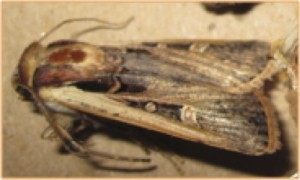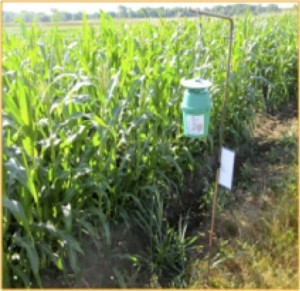Critters that did little damage before agriculture replaced natural ecosystems can prove tough customers when provided easy access to hundreds of thousands of acres of their favorite food. Even so, sometimes such pests are content to stay on their home turf until … until ….
The western bean cutworm (WBC for short) is a High Plains native. It’s unclear what until started its eastward trek, but now WBC is on the move. This pest of corn and dry beans is a tricky customer, tough to scout for — especially on beans. (Soybean growers, not to worry — WBC ignores them.) In parts of the Midwest and Ontario, Canada, losses have ranged from 10% in dry beans to 40% in field corn.

The first WBC sightings in NY came in 2009. This recent arrival in nearly every ag region in New York appears to survive our winters in fine form. Should we worry? Yes. Field corn is New York’s highest net-value crop, occupying more than a million acres statewide. What is NYS IPM doing? Since 2010 we and a cadre of intensely curious volunteers around the state, four-dozen strong, have monitored special pheromone traps that lure adult male moths to assess if WBC is on the rise. Not that the moths damage corn and beans; they don’t. But their larvae do.
What have we found? Good news first: WBC counts aren’t high enough yet to cause economic damage. But based on our records it’s safe to say — at some point they will. For while some places have yet to catch a WBC moth, overall each year our traps catch about 30% more moths.

What are we doing? We’ve begun adapting resources and thresholds (courtesy of Ontario, Michigan, and other IPM programs across the Midwest) for NY’s farmers. So when the larvae do hit threshold, we’ll be ready. And you volunteers — you know who you are — we’re nothing without you. Thank you.
Photos courtesy J. Keith Waldron.